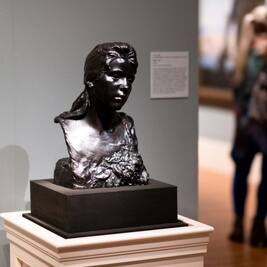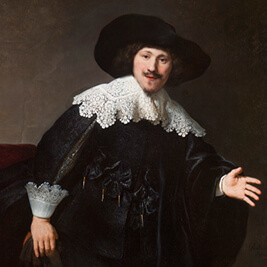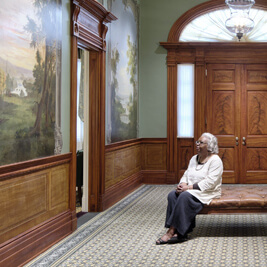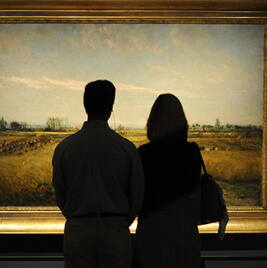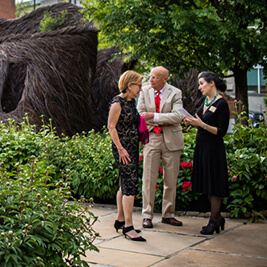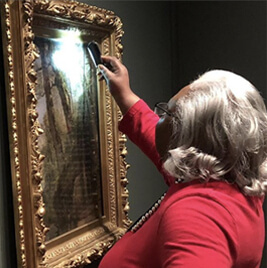- Do + See
- Dine + Host
- Give + Join
- Educate + Learn
J. M. W. Turner’s Europa and the Bull: Telling a Story with Light and Atmosphere
By Tamera Lenz Muente, Associate Curator
The exhibition Travels with Turner: Watercolors from the Taft Collection will highlight ten works on paper by the celebrated British landscape painter J. M. W. Turner. The sketches Turner made during his journeys throughout the United Kingdom and Europe informed his watercolors, which often feature accurate portrayals of specific places he visited.
Turner also frequently painted mythological, literary, or biblical subjects within imagined landscapes, represented in the Taft’s collection by Europa and the Bull (fig. 1). Because Turner likely did not finish the painting, the details are not immediately visible. The work depicts the abduction scene in which Jupiter, king of the Roman gods, transforms himself into a white bull to lure the young princess Europa. Attracted to the bull’s beauty and gentle nature, Europa climbed onto his back, and he galloped off into the sea.
Europa and the Bull is one of ten atmospheric paintings Turner created near the end of his life. For these paintings, he looked to an earlier series of etchings called the Liber Studiorum, or “Book of Studies,” which he began in 1807. He revisited subjects from the etchings including the frontispiece (fig. 2). In this cover image for the etching series, Turner depicted references to ancient architecture and nature, and at the center, a framed version of the abduction of Europa within a classical landscape. He reimagined this composition in the Taft’s Europa and the Bull.
Rather than carefully delineating the scene as he did in the etching, Turner started the painting with transparent layers of vibrant color to create a light-filled landscape. He reveled in applying the paint as much as in telling Europa’s story. Tangerine hues suggest an archway on the left. Misty pinks, yellows, and lavenders evoke a distant mountain range. A creamy band of paint creates a sandy shoreline, and an indigo wedge represents the sea.
In the dark blue water, a bit of white paint becomes the head of the bull, and a brown daub the young Europa. Her distraught companions—the most visible figures in the scene—wave frantically from shore.
How do we know that Turner never finished Europa and the Bull? He did not write about whether he meant to leave the painting in its loose, suggestive state, but because he started most of his paintings this way, Turner experts tend to agree the painting remained unfinished upon the artist’s death in 1851. Turner often added final details to his canvases after they were hung for exhibition, but he never exhibited Europa or the other nine late paintings during his lifetime. Did he plan to show or sell the works, or perhaps keep them for himself? Turner’s intentions for these paintings continue to be as mysterious as his misty and luminous depiction of Europa’s abduction.

